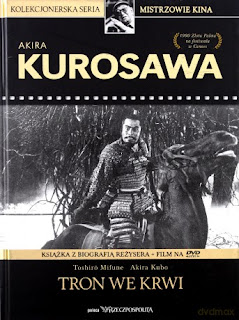[ENG/PL] Hatamoto in feudal Japan / Hatamoto w feudalnej Japonii (Ronin Bushi Buntai #2)
„Like the flowers, we are dying slowly .“ Knowing life with every breath, with every cup of tea, with every life we receive „- Bushidō Samurai Codex
In the previous entry devoted to the emerging of new Ronin gam band I brought closer to you, the respectful visitors, the basics of knowledge about the Samurai. Today I go further on the country of the Blossoming Cherry of Feudal era and present another painted hero from the set of North Star Military Miniatures.
Hatamoto, since I will speak of it today (in Japanese 旗 本) means literally „at the banner“ which is often translated as „the standard bearer“.
This higher samurai remained in the direct service of the Tokugawa Shōgun in feudal Japan. Although all three siogunas in Japanese history had official vassals, the two earlier were referred to as gokenin. During the Edo hatamoto period they were a larger group of Tokugawa vassals, and the lower gokenin.
The difference between them was based primarily on income levels. In addition, Hatamoto had the right to have audience with shōguna (this law did not have gokenin).
Many lords had their Hatamoto. However, when the Tokugawa clan gained a leading position in Japan in 1600, the social group was institutionalized.
Hatamoto ranks also included people from outside the hereditary lands of the Tokugawa home. The remnants of the families of the old defeated provincialists such as Takeda, Hōjō, Imagawa and the families of the feudal units of the gentry were included in the ranks of the social group. Among them were the heirs of masters whose domains were confiscated after long periods of clan wars.
Some Hatamoto managed to advance to the feudal rank of Daimyō. However, this did not happen often. One example of such a promotion is the case of the Hayashi Kaibuchi family (later known as Jozai han), who started from Hatamoto to become the mentioned Daimyōs and play a significant role in the Boshin War.
Hatamoto lost their status along with all other samurai in Japan after the abolition of these states in 1871.
„Jak kwiaty powoli wszyscy umieramy. Poznając życie z każdym oddechem. Z każdą czarką herbaty, z każdym życiem, które odbieramy“- z Kodeksu Samurajów Bushidō
W poprzednim wpisie poświęconym powstającej nowej bandzie do gry Ronin przybliżyłem Wam, szacowni odwiedzający, podstawy wiedzy na temat Samurajów. Dziś wędruję dalej po kraju Kwitnącej Wiśni czasów Feudalnych i przedstawiam kolejnego pomalowanego bohatera z zestawu North Star Military Miniatures.
Hatamoto, gdyż o nim będzie mowa ( z jap. 旗本 ) oznacza dosłownie „u sztandaru“ co tłumaczone jest często jako „chorąży“.
Ten wyższy rangą samuraj pozostawał w bezpośredniej służbie shōgunów Tokugawa w feudalnej Japonii. Mimo że wszystkie trzy siogunaty w historii Japonii posiadały oficjalnych wasali, w przypadku dwóch wcześniejszych określano ich jako gokenin. W okresie Edo hatamoto byli wyższą grupą wasali rodu Tokugawa, a gokenin niższą.
Różnica między nimi opierała się przede wszystkim na poziomie dochodu. Dodatkowo, Hatamoto mieli prawo audiencji u shōguna (to prawo nie przysługiwało gokenin).
Wielu Panów posiadało swoich Hatamoto. Gdy jednak klan Tokugawa osiągnął pozycję lidera w Japonii w 1600 roku, omawiana grupa społeczna została zinstytucjonalizowana.
Szeregi Hatamoto obejmowały również osoby z zewnątrz dziedzicznych ziem domu Tokugawa. Resztki rodzin dawnych pokonanych prowincjonalistów, takich jak Takeda, Hōjō czy Imagawa, oraz rodziny oddziałów feudalnych panów zostały włączone w szeregi grupy społecznej. Wśród nich byli także spadkobiercy panów, których domeny zostały skonfiskowane po okresie wieloletnich wojen między klanami.
Niektórym Hatamoto udawało się awansować do rangi feudalnych Daimyō. To jednak nie zdarzało się często. Jednym z przykładów takiego awansu jest przypadek rodziny Hayashi Kaibuchi (znanej później jako Jozai han), która zaczęła z poziomu Hatamoto, by stać się wspomnianym Daimyōs i odegrać znaczącą rolę w wojnie Boshin.
Hatamoto stracili swój status wraz ze wszystkimi innymi samurajami w Japonii po zniesieniu tych stanów w 1871 roku.
Dieser Artikel stammt von einer der angeschlossenen Quellen. Bitte honoriere die Arbeit der Autoren indem du ihren Webseite besuchst.
Artikelquelle besuchen
Autor: DwarfCryptDwarfCryptDwarfCrypt
Powered by WPeMatico




















